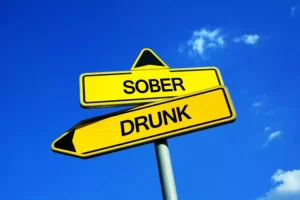Break the cycle of addiction with these strategies to keep dopamine in check : Life Kit : NPR

For example, when it comes to illicit drugs used to feel a ‘high,’ even one use is considered abuse. The pursuit of drugs or alcohol can quickly drain bank accounts and lead to financial ruin. Job loss, mounting debts, and the high cost of sustaining an addiction can create a perfect storm of financial distress. https://ecosoberhouse.com/ Additionally, many individuals struggling with addiction find themselves on the wrong side of the law, facing charges related to possession, intoxication, or crimes committed to obtain drugs. This neurotransmitter plays a crucial role in the brain’s reward system, creating feelings of pleasure and motivation.

In Summary: The Preoccupation/Anticipation Stage and the Prefrontal Cortex
Transtheoretical model stages are a behavioral change model conceived by renowned alcohol addiction researchers, Prochaska and DiClemente, in the 1980s. Drug cravings are a significant aspect of addiction, often presenting a formidable challenge for individuals attempting to overcome substance dependence. As defined by Maarefvand, Masoomeh et al. in their 2013 study published in the Iranian Journal of Psychiatry, drug craving is characterized as an intense urge or desire to continue using a substance. This urge is a fundamental element of addiction, frequently experienced by individuals dependent on substances. On the other hand, a full-blown relapse results in the resumption of active addiction behaviors, continued drug abuse, lack of awareness and denial, more severe consequences, and difficulty regaining sobriety.
What are the five addiction stages?
This will allow you to effectively move on to the maintenance stage without experiencing the relapse stage. The psychology of addiction is a complex field where the experts, by experience, seem to have the deepest level cycle of addiction of real-world understanding. Each of those models provides a different perspective on the complex phenomenon of addiction. With so many models, it may be clear that no single model, so far, has captured its complexity.
Neurodivergent Women “Urgently” Need Workplace Support Around Menstrual Health

For example, human studies have benefited greatly from the use of brain-imaging technologies, such as magnetic resonance imaging (MRI) and positron emission tomography (PET) scans. These technologies allow researchers to “see” inside the living human brain so that they can investigate and characterize the biochemical, functional, and structural changes in the brain that result from alcohol and drug use. The technologies also allow them to understand how differences in brain structure and function may contribute to substance use, misuse, and addiction. A substantial body of research has accumulated over several decades and transformed our understanding of substance use and its effects on the brain. This knowledge has opened the door to new ways of thinking about prevention and treatment of substance use disorders. The treatment recommended for drug use and any coexisting medical or mental health conditions can vary.
Substance Abuse Treatment Programs Help Break the Cycle of Addiction
Unlike experimentation, where usage might be controlled and less frequent, risky abuse often occurs more consistently but has still not progressed to physical dependence. Drug abusers have progressed past the stage of experimentation and are at heightened risk of developing physical tolerance and full-blown addiction. This stage is distinct from tolerance and dependence, as full tolerance and physical reliance have not yet manifested. For instance, problematic drinking resulting in blackouts or monthly excessive cocaine use are indicative behaviors. Although experimenting with drugs doesn’t mean you’ll become addicted, it often opens the door to other levels in the drug addiction cycle, like drug abuse, tolerance, and dependence, which can then lead to full-blown drug addiction. Unfortunately, most people living with addiction experience relapse at least once.
- Having people to lean on during tough times can make all the difference in maintaining sobriety.
- The initial decision to take drugs is voluntary for most people, but repeated drug use can lead to brain changes that challenge an addicted person’s self-control and interfere with their ability to resist intense urges to take drugs.
- Therefore, education and outreach are key in helping people understand the possible risks of drug use.
- The Addiction Timeline isn’t just about behavior – it’s etched into the very architecture of the brain.
- A substantial body of research has accumulated over several decades and transformed our understanding of substance use and its effects on the brain.
- Nimitvilai et al. (2013) found that ethanol-induced excitation of dopamine neurons in the rat ventral tegmental area (VTA) was significantly reduced in the presence of a phorbol ester in a mechanism involving the theta isoform of protein kinase C.
In this final stage of addiction, the individual attempts to stop using the substance but experience intense withdrawals. These withdrawals may be so extreme you’re willing to do anything to obtain the substance. At this stage, the addict’s health, financial status, and social life have been severely affected by their addiction. If an individual requires higher doses of the substance or begins experiencing withdrawal if they aren’t using the drug, they are likely in the third stage of the addiction cycle. The first stage of addiction includes a person’s first time using a substance.
Understanding the causes of addiction
This is called withdrawal, which often leads the person to use the substance again to relieve the withdrawal symptoms. To understand how addictive substances affect the brain, it is important to first understand the basic biology of healthy brain function. Within the brain, a mix of chemical and electrical processes controls the body’s most basic functions, like breathing and digestion. Until recently, much of our knowledge about the neurobiology of substance use, misuse, and addiction came from the study of laboratory animals. Although no animal model fully reflects the human experience, animal studies let researchers investigate addiction under highly controlled conditions that may not be possible or ethical to replicate in humans.

- Professional help and rehabilitation programs often address these components to assist individuals in breaking the cycle of addiction.
- Your health insurance company will only pay for services that it determines to be “reasonable and necessary.” The treatment center will make every effort to have all services preauthorized by your health insurance company.
- Cravings are particularly strong in the early stages of abstinence, making this period critical for relapse prevention.
- For example, human studies have benefited greatly from the use of brain-imaging technologies, such as magnetic resonance imaging (MRI) and positron emission tomography (PET) scans.
- Substance abuse treatment can begin no matter what stage of addiction you’re currently experiencing.
- The successes achievable through professional treatment and care cannot be overemphasized.
- This phenomenon, called conditioned reinforcement, can be defined as when a previously neutral stimulus reinforces or strengthens behaviours through its association with a primary reinforcer and becomes a reinforcer in its own right.
The journey of a thousand miles begins with a single step – and that step could be today. Addiction doesn’t just affect the individual using substances – its impacts ripple outward, touching every aspect of a person’s life and the lives of those around them. As the effects of the substance wear off, the second stage of the addiction cycle kicks in. The body, now accustomed to the presence of the drug, begins to rebel against its absence.
- Following the stages of change addiction, the termination stage is the final point where the person adjusts to abstinence and can control themselves even when there are addiction triggers present.
- Additionally, determining how neurobiological factors contribute to differences in substance misuse and addiction between women and men and among racial and ethnic groups is critical.

It’s when a person first tries a substance or engages in a particular behavior (like gambling or excessive internet use). It can also be driven by peer pressure, where someone feels encouraged to fit in with a group, or as a way to cope with stress, emotions, or other challenges. Understanding these stages is crucial for early intervention and effective treatment.
